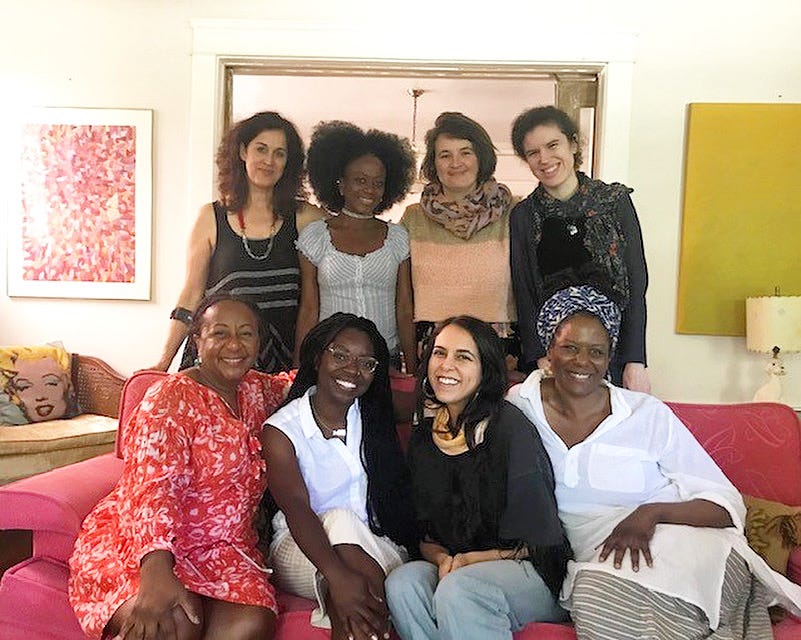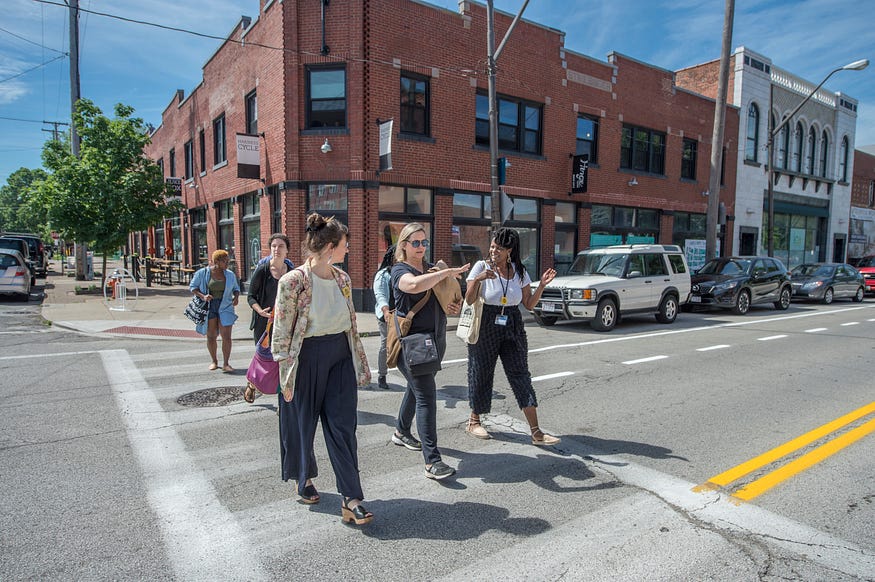Exploring the CMA’s Collection with DAMLI Graduate Fellows Ra Malika Imhotep and Zaina Alsous
- Blog Post
- Events and Programs


Thanks to a generous three-year grant from the Ford Foundation and the Walton Family Foundation through the Diversifying Art Museum Leadership Initiative (DAMLI), we have established three new programs at the Cleveland Museum of Art. Last month we wrote about the CMA’s undergraduate student guide program and met Jeanna Lopez (Case Western Reserve University class of 2021). This month we share with you the DAMLI Summer Seminar and Fellowship programs for advanced graduate students and faculty.
While the student guide program is designed to introduce undergraduates to the museum field in general, the summer seminar allows emerging and established scholars to delve into the museum’s collections and public spaces in a different way. Through workshops, object study, and group and independent projects — led by the two faculty residents — fellows read together, thought together, and experimented together in the galleries and the art studio using the museum as a laboratory for discovering new ways to engage broad audiences.

In summer 2019, we conducted the second DAMLI Summer Seminar with six graduate fellows. Today’s post highlights two: Zaina Alsous (MFA, creative writing, University of Miami) and Ra Malika Imhotep (PhD candidate, African American and African diaspora studies, University of California, Berkeley). Over the course of the two week seminar, the fellows were encouraged to reimagine how we present the museum’s collection, specifically works by and/or about African American artists and subjects, to our diverse audiences. They were asked to use their expertise, whether academic, artistic, or both, to develop these new ways of looking at and thinking about collection objects to deepen visitors’ experiences. Inspired by a seminar assignment that asked them to consider an art object as a witness to history, the pair each selected an artwork, explored it through close looking, archival research, and studio activities, and devised the poetic responses below.
The Assignment: Art Object as Witness
Museum collections aren’t neutral. They are defined through collections of social objects often perceived and/or presented as historical truth. At the same time, museums are about looking and learning to see. Visitors are actively engaged in “looking” at objects.
What would it mean to invert this notion of looking and think about how an art object might look back at us, and each other. What would it see? What would it say to a visitor or to another object?
— DAMLI 2019 co-facilitators Nanette Yannuzzi and Dr. Erica Moiah James
DAMLI graduate fellows Ra Malika Imhotep and Zaina Alsous:
We both entered the 2019 DAMLI cohort as writers invested in the ways that aesthetics complement and extend the larger social, cultural, and political concerns that drive our work. In collaborating on this blog post, we each had a different approach to selecting an art object to write about. Imhotep chose an object that she saw during our summer visit to the CMA galleries, while Alsous went looking in the CMA archive for paintings by an artist whose work she knew and loved. In writing about these two very distinct works of black art, or artworks by artists of the African diaspora, we both endeavored to give language to the assumed silence of the object. Following the prompt given by our co-facilitators, professors James and Yannuzzi, to “invert [the] notion of looking,” we turn to ekphrasis, a poetic technique of description. These poems sound out the stories these objects might tell and the feelings that they evoke in our own particular voices.


Essay and poem inspired by Female Figure (1975.158) from the CMA’s collection of West African art
By: Ra Malika Imhotep

The CMA’s website describes this small 19th-century West African object, likely made by the Akan people, as one of spiritual and medicinal use. It might otherwise be described as a fetish, or an object imbued with spiritual or supernatural attributes. I see it as a doll. It is a totem for the infertile woman, to be worn against her body and tended to like a child until she successfully gives birth. When the child is born, the doll can either be gifted to the child as a toy or returned to the fetish priest — who mediates between the spirit represented in the fetish and the living — as an offering. At the time of writing, I had no facts about where this object was found, only that it was a gift first shown at the museum in 1968. And since seeing it in the museum’s African art gallery, I have been struck by how intimate the object is. It is one of the few Akan items in the museum’s collection without gold embellishment, or gilding — but no less precious. I wonder: how much pain and yearning must have been sweat into that wood? How do you restore that? Or protect against the degradation that comes from the touch that accompanies heavy prayer? Positioned in the museum, does the spiritual specificity of the object get lost in the valorization of African craftsmanship? This object, in its condition of creation, required heavy handling, and now it sits behind a glass case watching me study it. I long to be(hold) it. I long to sit it at my own altar. I wonder if it worked. Did the woman who scraped together her offering, to bring to the fetish priest and then to the village artisan who sculpted her spiritual prescription, successfully conceive? Did the child live to play with the toy they owed their life to? Or did the sacred doll sit on the priest’s shrine, witness to ceremony and sacrifice? Is it content to be at the Cleveland Museum of Art forever without the taste of sweat or blood?
Akua’ba
Before birth
the bark litters
the sculptor’s floor.
The woman is small
so this too is cut thin.
The breast pendular
longing to suckle —
motherhunger in her
desperate plea to the priest.
Pressed between thread
bare cloth, she sweat into
the mouth of babe —
humming sweetly
as she breaks
straw into broom.
There is prayer in her
every labor —
from market stall
to pestle, the everyday
dance her lover
watches anxiously.
By moonlight
they offer sacrament
to a sleeping god.
By morning she has
braided the tufts
of hair.
She sings to it
sometimes, when no one else
is watching. If only
this wood turn to
flesh and cry out
in her arms.
Essay and poem inspired by Beauford Delaney’s 1962 Untitled (2016.303) from the CMA’s collection of 20th-century American art
By: Zaina Alsous

In many of Beauford Delaney’s paintings, I am looking for what cannot be easily transferred into words. By the 1960s, he would have left America for Paris to become an advanced and early practitioner of Abstract Expressionism. We know he was underpaid and yet never stopped working, we know by the early 1960s his health was deteriorating, and we know he was always a student of light and transcendence.
As part of his catalogue introduction to the Tables of Beauford Delaney exhibition at the Galerie Lambert, which opened on December 4, 1964James Baldwin wrote, “the darkness of Beauford’s beginnings, in Tennessee, many years ago, was a black-blue midnight indeed, opaque and full of sorrow. And I do not know, nor will any of us ever really know, what kind of strength it was that enabled him to make so dogged and splendid a journey.”
In the untitled painting from the CMA’s collection, the tones of sorrow and fog intermingle, gradate — extend but never overtake the light, the constant heat underneath. Perhaps not so easily read as hopeful. But the yellow that remains — peeking out from the darkest and thickest strokes — guides the eye throughout, signaling the significance of what could be, what lives beneath, what lives again, what lives in spite of, alongside the applied and projected chaos.
Untitled, Beauford Delaney, 1962
The aftermath is always happening
before land can be solved, or leila
empties a ladle of bruises, that mimic
the memory of moonlight. I saw
a sign, it was bones in a field of sunflowers,
bleached by the ultraviolet, mimicking
the inclination of a life that comes before
a life that comes before what cannot be solved.
All I miss are the colors of what didn’t arrive.